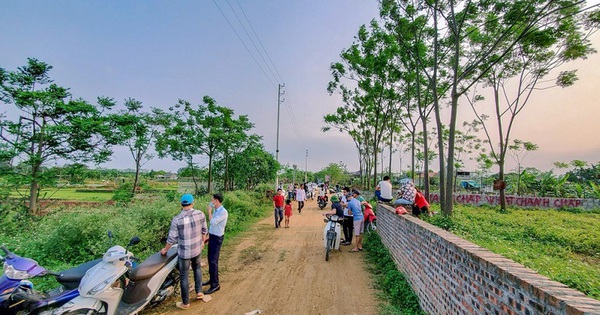From 1/1/2025, 105 cities nationwide will face stricter land subdivision regulations, making it difficult for land prices to soar, experts predict
The amended Real Estate Business Law, which takes effect from 1/1/2025, prohibits the transfer of land use rights for individuals to self-build houses or subdivide land for sale in special type, type I, II, and III urban areas. This applies to cases where land use rights are auctioned for investment in residential construction projects, according to the Land Law.
For other areas, the provincial People’s Committee will determine the areas where project investors can transfer land use rights that already have technical infrastructure for individuals to self-build houses, based on local conditions.
Currently, Clause 2, Article 41 of Decree 43/2014/ND-CP, as amended by Decree 148/2020/ND-CP, only restricts land subdivision and sale in wards of special type urban areas and type I urban areas under the central government’s management, areas with high architectural landscape requirements, central areas, and surrounding areas of architectural highlights in urban areas…
According to statistics from the Ministry of Construction, by December 2023, there were 902 urban areas nationwide, including 2 special type urban areas, 22 type I urban areas, 36 type II urban areas, 45 type III urban areas, and 95 type IV urban areas, and 702 type V urban areas. Therefore, the new regulations will restrict land subdivision and sale in a total of 105 cities and towns, an increase of 81 compared to the current regulations.
Specifically, the following urban areas nationwide will face stricter land subdivision regulations:
Type special urban areas
- Hanoi
- Ho Chi Minh City
Type I urban areas
- 3 centrally-run cities: Hai Phong, Da Nang, Can Tho
- 19 provincial cities: Hue, Vinh, Da Lat, Nha Trang, Quy Nhon, Buon Ma Thuot, Thai Nguyen, Nam Dinh, Viet Tri, Vung Tau, Ha Long, Thanh Hoa, Bien Hoa, My Tho, Thu Dau Mot, Bac Ninh, Hai Duong, Pleiku, Long Xuyen
Type II urban areas
- Provincial cities: Phan Thiet, Ca Mau, Tuy Hoa, Uong Bi, Thai Binh, Rach Gia, Bac Lieu, Ninh Binh, Dong Hoi, Phu Quoc, Vinh Yen, Lao Cai, Ba Ria, Bac Giang, Phan Rang – Thap Cham, Chau Doc, Cam Pha, Quang Ngai, Tam Ky, Tra Vinh, Sa Dec, Mong Cai, Phu Ly, Ben Tre, Ha Tinh, Lang Son, Son La, Tan An, Vi Thanh, Cao Lanh, Vinh Long, Tuyen Quang, Soc Trang, Kon Tum, Di An, Yen Bai
Type III urban areas
-
29 cities: Dien Bien Phu, Hoa Binh, Hoi An, Hung Yen, Dong Ha, Bao Loc, Ha Giang, Cam Ranh, Cao Bang, Lai Chau, Tay Ninh, Bac Kan, Tam Diep, Song Cong, Sam Son, Phuc Yen, Ha Tien, Dong Xoai, Chi Linh, Long Khanh, Gia Nghia, Nga Bay, Thuan An, Hong Ngu, Tu Son, Pho Yen, Tan Uyen, Ben Cat, Go Cong
-
16 towns: Son Tay, Cua Lo, Phu Tho, Bim Son, La Gi, Song Cau, Long My, Tan Chau, Cai Lay, Quang Yen, Ky Anh, Binh Minh, Dong Trieu, Phu My, An Nhon, Kien Tuong
In regards to the impact of the new regulations, Dinh Minh Tuan, Director of Batdongsan in the Southern region, believes that with the widespread land subdivision in recent years in type II and III urban areas, this tightening of regulations will have an almost blanket effect on the market from north to south (90% of investors may be affected in type II and III cities).
“When the tide recedes, price adjustments are natural… and land plots may no longer witness the same land frenzy as before,” Tuan predicts.

